Alsace
We’ve been on a road trip to Alsace, in eastern France, for the last week and a half. We visited Strasbourg, Colmar and Mulhouse (pronounced “ma-looze,” of course). We’ve never been to this part of France and Mary has suggested it for a road trip over the last few years. We finally got it together and are very glad we did; this is a very enjoyable, and very different, part of France.
First, the different. Alsace is located due east of Paris, a five hour drive, so about 280 miles. Over its history, it has bounced back and forth between France and Germany, the transition from one to the other almost always driven by hostilities. I thought about outlining the history of Alsace but the more I read, the more complicated it became. So I’m going to boil it down t0 answer the question, “Is Alsace French or German?” reminding you that there was no real Germany until the 1870s, Alsace has been:
French, then Germanic, then French with Germanic language, laws and customs prevailing, then French with French laws, then Prussian and Austrian (Germanic), then French, then German, and now French. Simple, eh?
The important thing to remember, and you’ll see this in the houses and buildings of Alsace, is that the Germanic influence is stronger than the French influence here. Makes for an interesting area…
We were gone nine days and rather than post one big long boring post about the whole trip, I’ll do several posts to cover each of the main places – Strasbourg, Colmar and Mulhouse – and maybe a couple shorter posts about places we visited. Let’s start with some pictures of downtown Strasbourg. It will definitely make you think you’re in a city smack in the middle of Germany.
Strasbourg
Strasbourg is a big city: about 470,000 people in the city proper and 800,000 in the “urban area” (including suburbs and smaller towns around the city). The central city is on an island of sorts; the Ill river splits north of the city, half goes in a stream to the east and the other half in a stream to the west, and rejoins south of the city.
The Cathedral
The Strasbourg cathedral has several distinctive aspects. Like many churches in Europe, it was built on top of an earlier church, which may have been Catholic or Protestant or pagan. That church was started in the 1100s, largely of Romanesque architecture, solid, with thick walls, small windows and rounded or slightly pointed arches. In the 1200s, as the beautiful Gothic cathedrals were being built in France, work on the Romanesque Strasbourg cathedral was stopped and a Gothic design created. (This was not unusual; many churches in France and Europe had mysterious fires that burned a Romanesque church and allowed a new Gothic structure to be built in its place.) Rather than tearing down the existing Romanesque church, which had a completed apse and altar and transept, the new Gothic design was added onto it; this included the nave and almost all the exterior
The most unusual aspect of the Strasbourg cathedral is its west façade – the main entry to the cathedral and the most visible part. It has Gothic unlike any other we’ve seen.
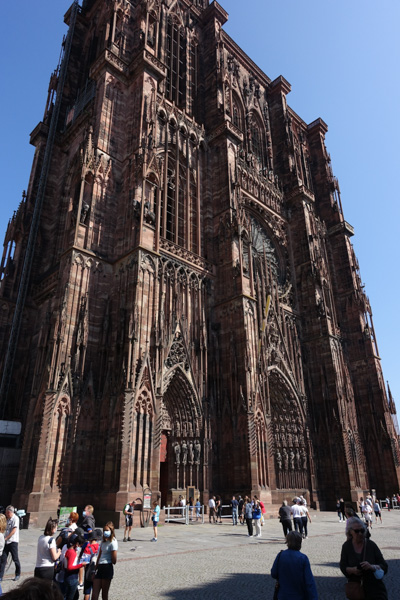
The Strasbourg Cathedral from the place in front of it. Where most Cathedrals have a façade decorated with statues and a rose window, this cathedral has statues, a rose window and many vertical columns holding arches. This gives the façade a vertical aspect unlike any other cathedral we’ve seen.
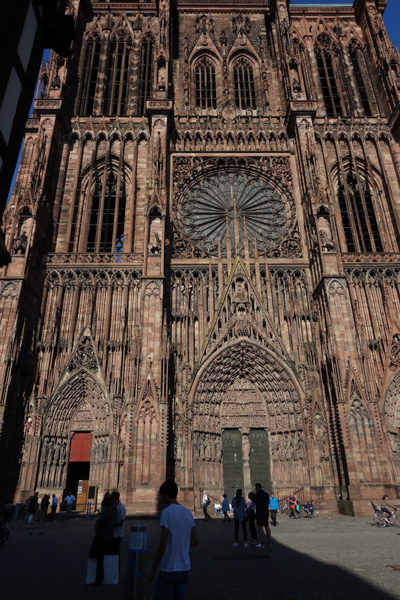
A straight-on view of the façade, showing the vertical columns and arches that cover the west front.
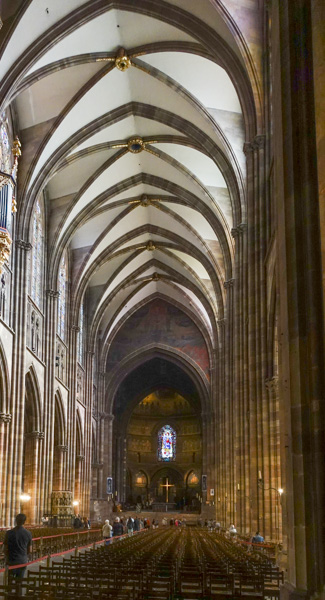
This is pure Gothic architecture right up to the central arch over the alter. Beyond that, it’s Romanesque, a reminder that the Cathedral was being built in Romanesque when Gothic started to appear in France (in the 1100s and 1200s). As Gothic gained in importance, many older churches were converted from Romanesque and often, as in the case of the Strasbourg Cathedral, the new Gothic sections were built on and alongside older Romanesque parts.
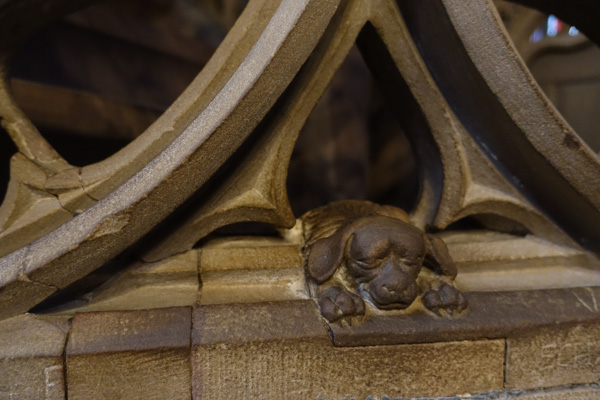
The bishop who preached here when the pulpit was carved had a dog of which he was particularly fond. He wanted to have the dog near him when he preached, and the person who carved the pulpit obliged him.
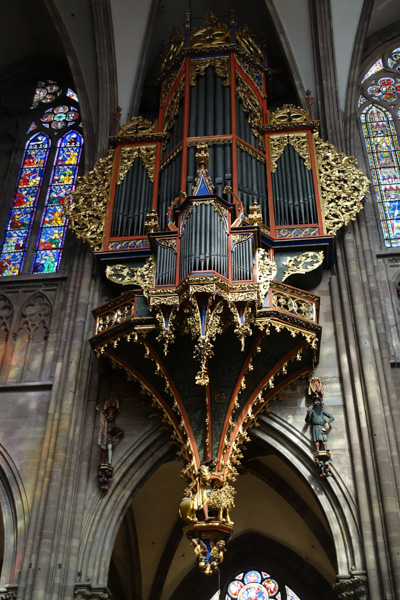
What’s a Cathedral without a beautiful organ? This one is particularly stunning. Built in the 1500s, so a “recent” addition to the Cathedral.
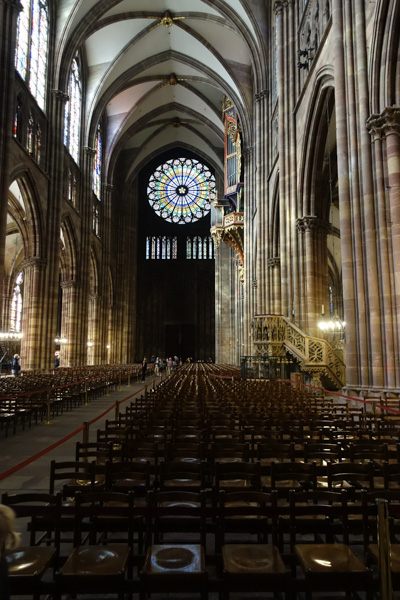
This rose window has a funny story. It was originally designed to be much higher on the west front wall, but the person designing the building put the arch above it lower, which would have hidden the top third of the window. It was easier to lower the rose window than raise the arch so now it sits lower than rose windows in other cathedrals.
Walking Around
We did a LOT of walking in Strasbourg. It’s a fairly compact city, with interesting things to see just about everywhere.
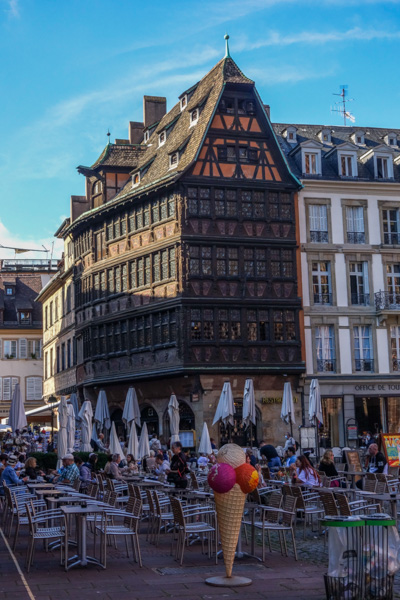
This is the oldest “house” in Strasbourg, built in 1537! It’s on the place in front of the Cathedral. The two bottom floors house a restaurant, at which we had a terrific dinner.
Some Older Buildings
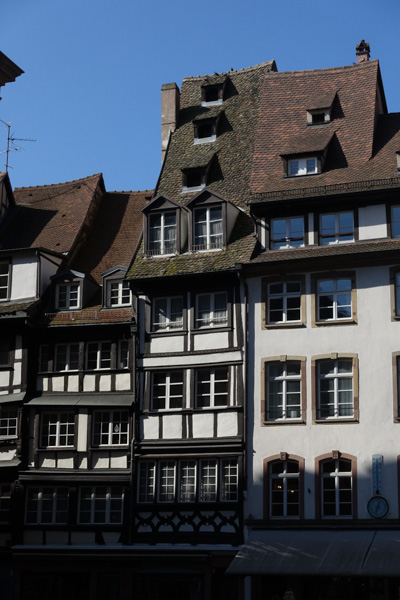
This house shows a common Strasbourg roof. Foodstuffs were kept in the attic and to keep them fresher, these windows were built to allow air to circulate.
Some Newer Buildings
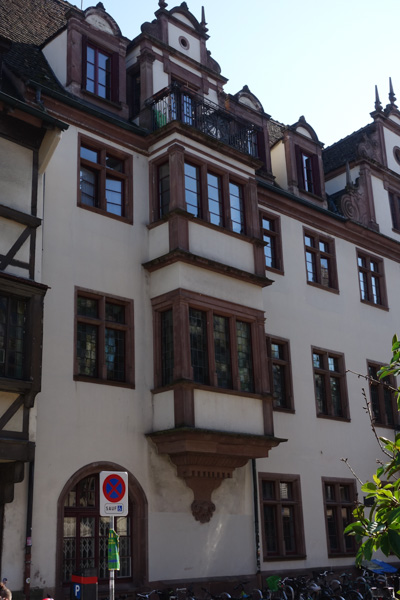
This building has an oriel window – the squared off bay window that starts at the second floor. Not uncommon here, we have also seen them in Barcelona and Zamora, Spain. Evidently a German influence, how the heck did they get to Spain?
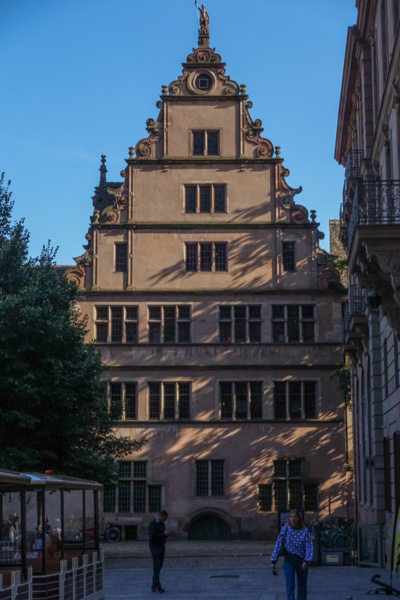
This example of German Renaissance architecture illustrates one of many influences on Strasbourg as it went back and forth between Germany (and its predecessor states) and France.
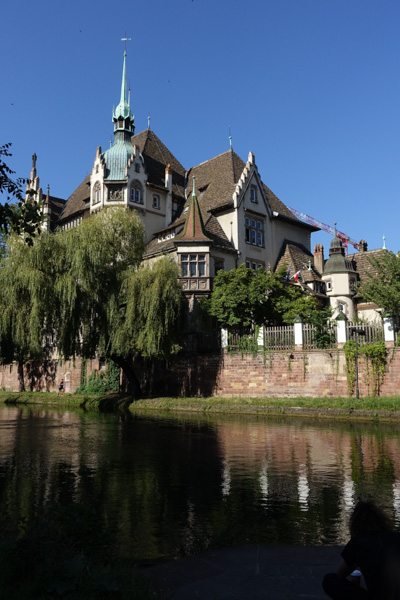
This is a school! Really. It started life as a residence, and was donated to the city when its owner died. Nice school, eh?
The River Ill
Strasbourg’s central area is surrounded by the river Ill. It’s not a huge river, but the city has taken advantage of it fully, with miles of beautiful river banks and walks. We even took a boat that went all around the city, through a couple locks and up the Ill a few miles to see the European Parliament buildings.
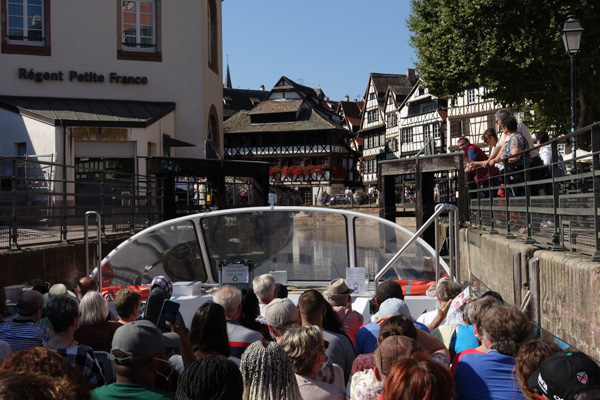
On our boat tour we went up in one lock and down in another. Here we are in the first of the two as the lock gates open to let us proceed.
Some walking Around Sights
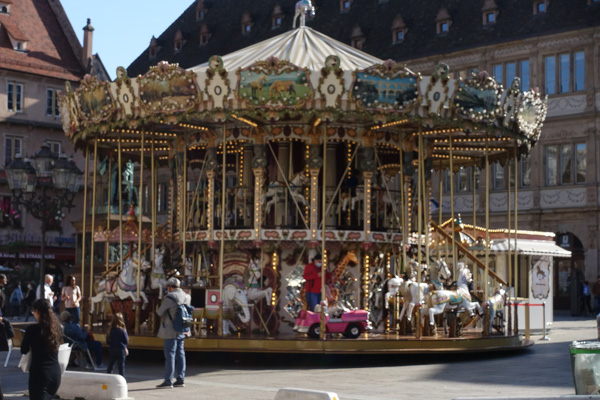
Carousels are popular in France; most cities have at least one and they’re all as fancy and whimsical as this one.
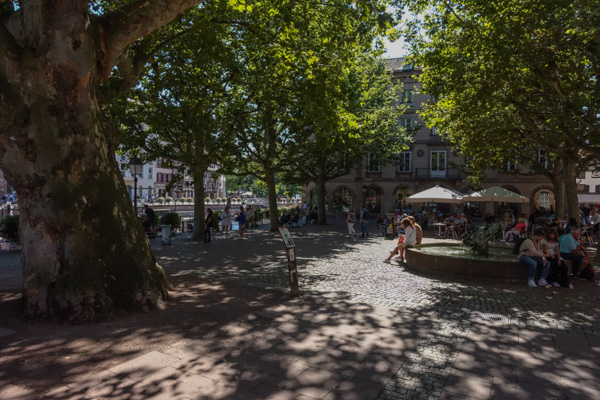
On our way to get on our boat tour, we passed through this place. Laurie said this would be a good place to sit and have a beer. So when we returned from the tour, we did just that. She was right.
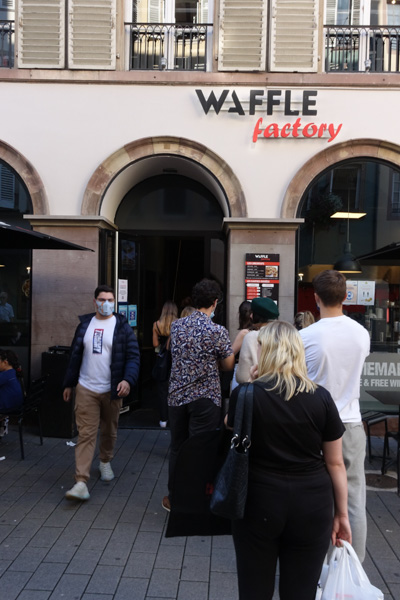
People lined up for dinner at the Waffle Factory. Really? In France, where the average restaurant is pretty darn good? Oy.
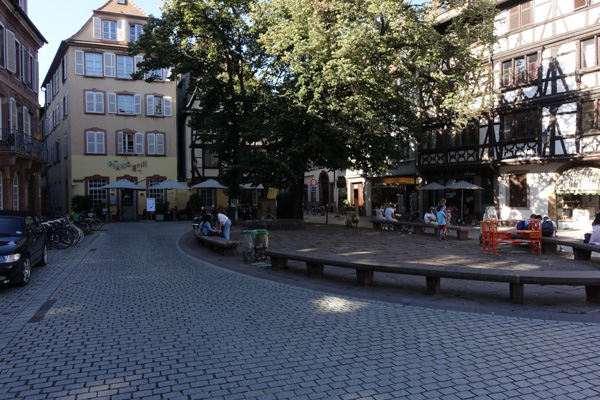
So we chose the restaurant on the left for dinner. Looked nice, on a lovely little place, nice staff, good menu. Our dinner there? Not so good. Maybe we should have gone to the Waffle Factory.
That’s my quick description of Strasbourg. We really liked it here and we know we saw a small part of its history and beauty. I suspect we will return on a future France trip. It’s an easy high-speed train ride from Paris, and there really is no need for a car once you’re here. But after three nights, it was time to head south to our next destination: Colmar.

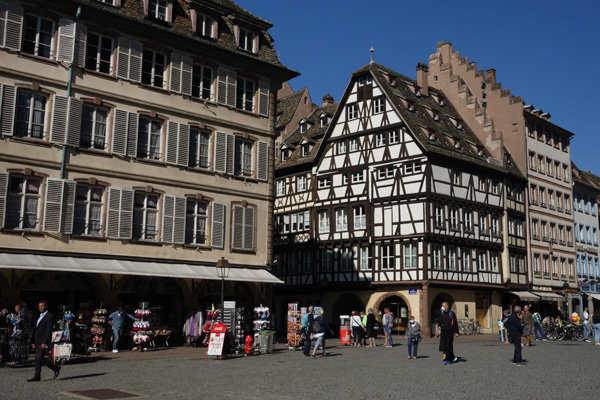
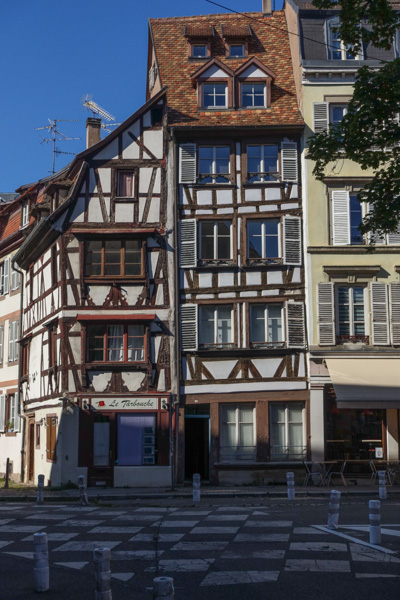
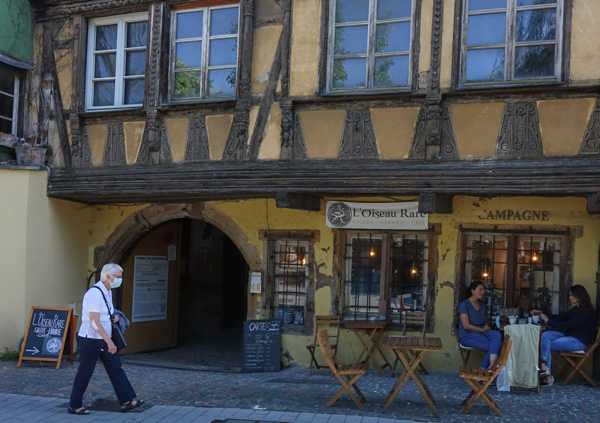
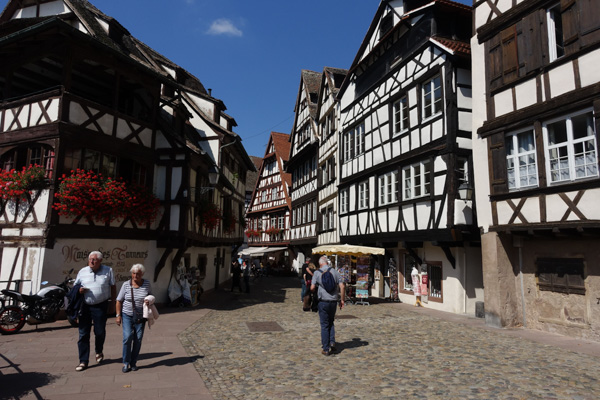
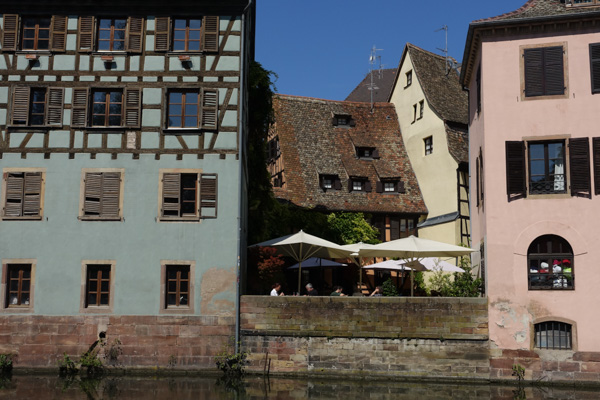
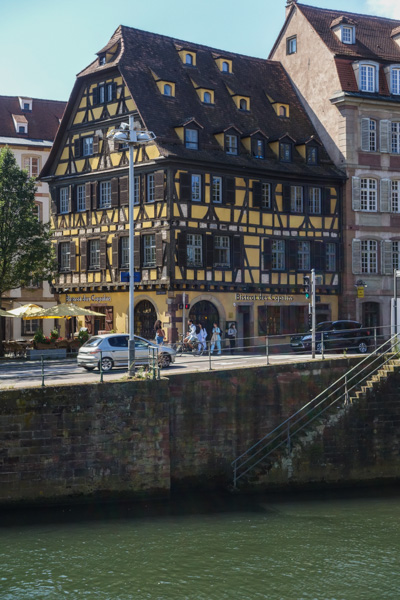
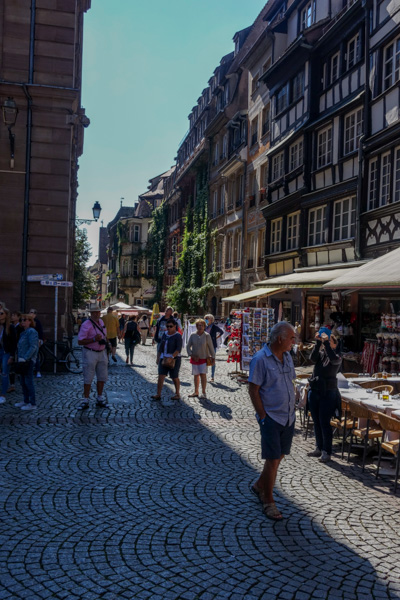
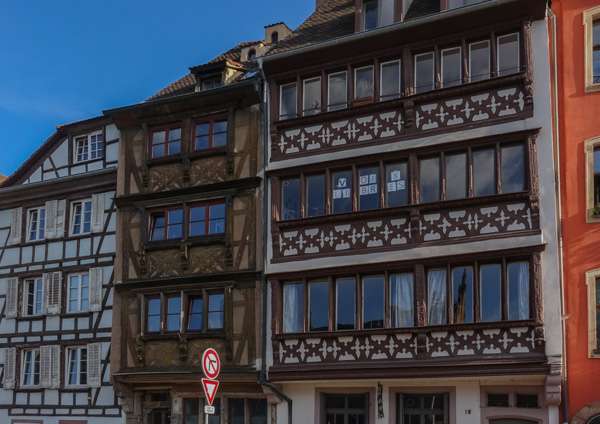
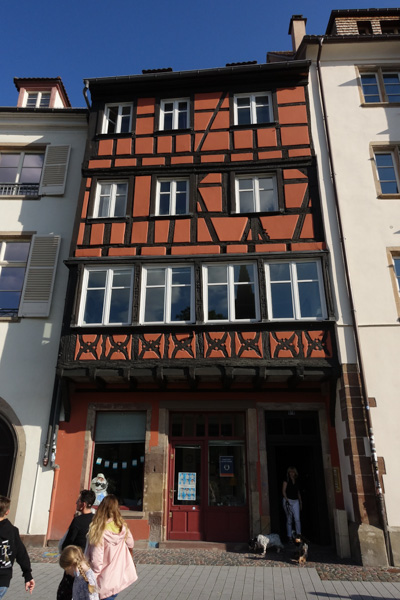
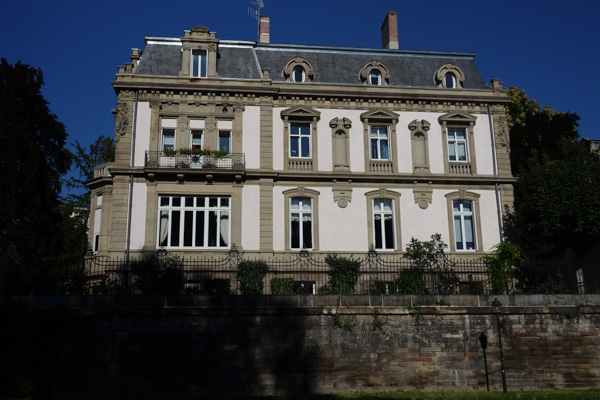
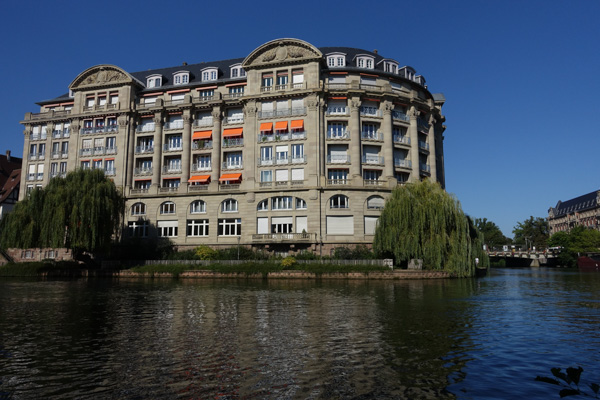
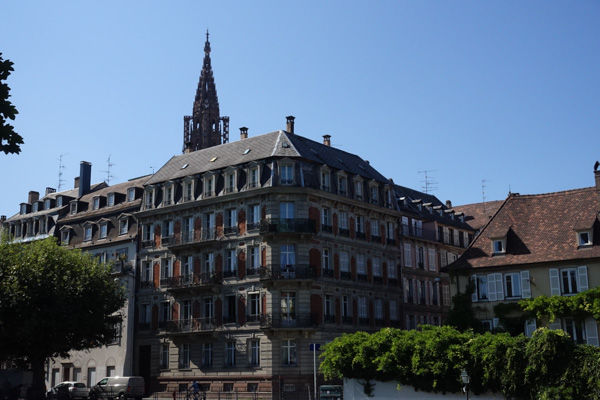
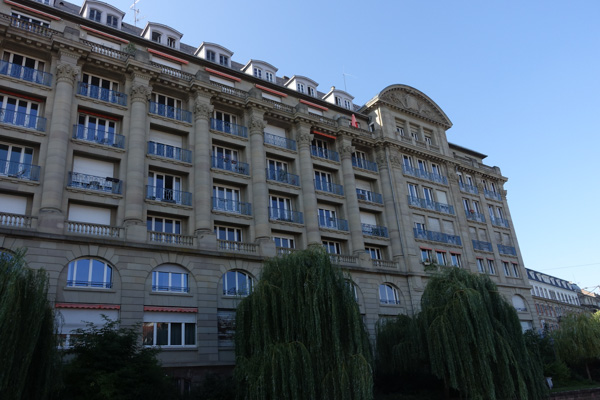
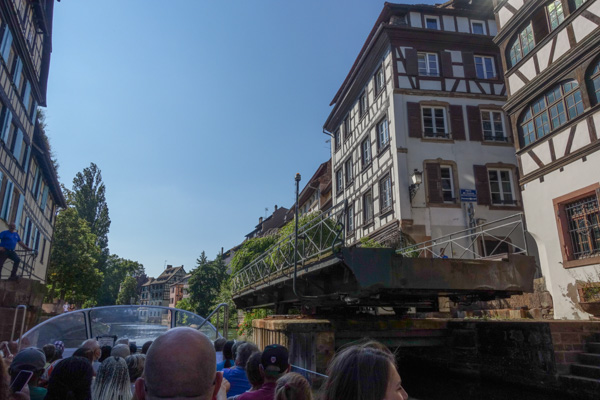
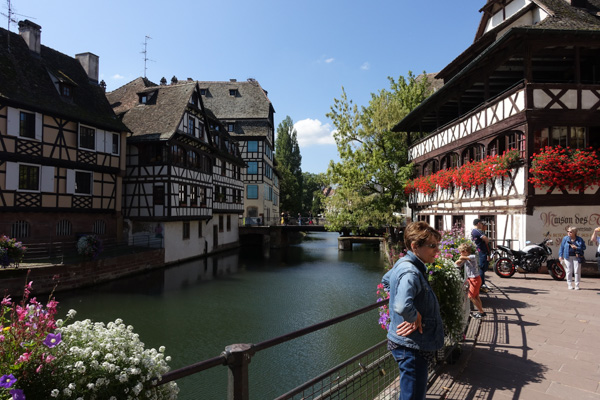
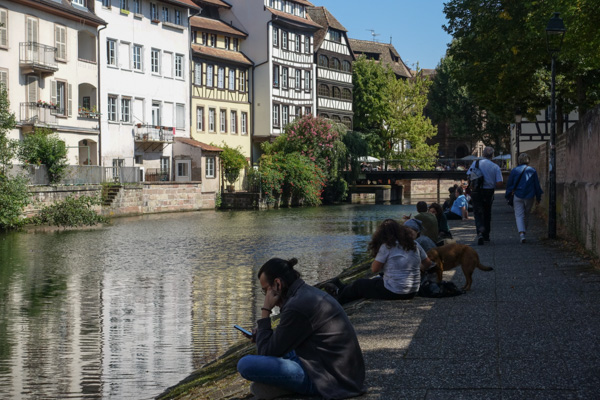
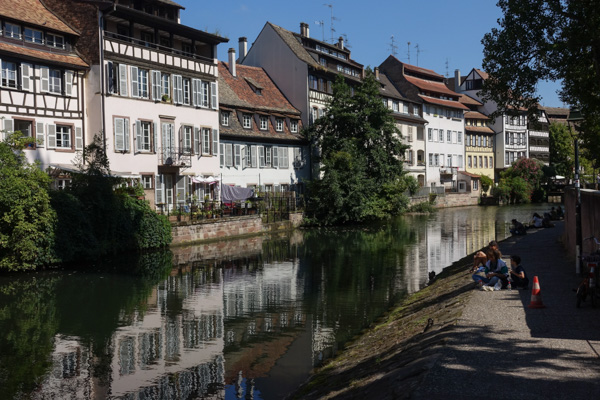
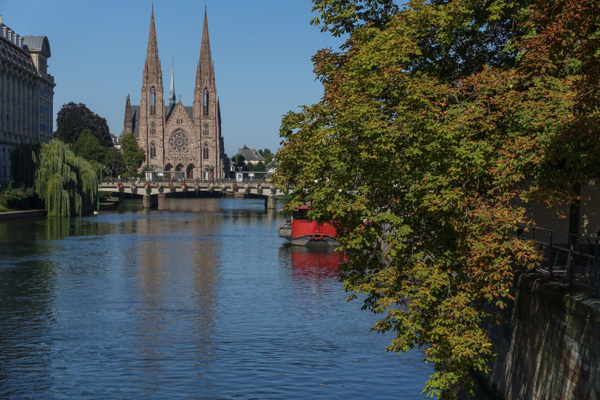
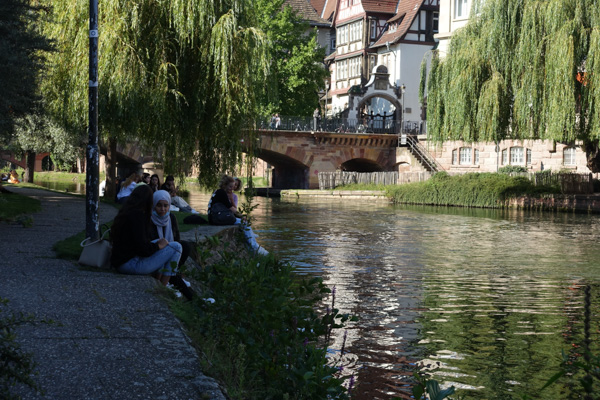
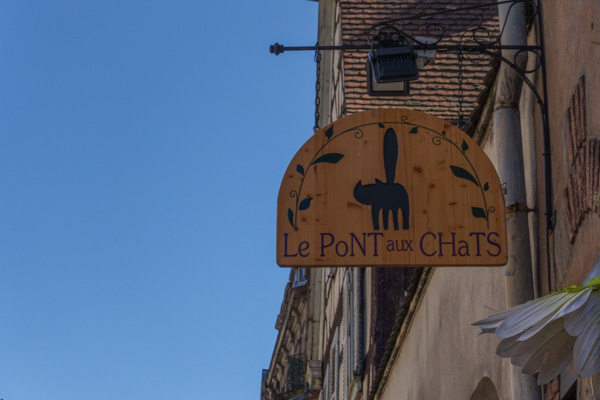
Thank you, John. Lovely memories….did you mention the perfect weather we were lucky to enjoy? No photo of your choucroute? It was a great trip…
Thank you, John. I appreciate your comments and the wonderful pictures of architecture, doors, AND food. Such fun to share in your journeys.
Very cool pics and description, Z! Alsace is high on my list. My mom’s family is from Alsace. We make homemade noodles from an old Alsatian recipe that is basically spaetzle. My dad’s family emigrated from nearby Baden-Wurttemberg.
I always love the interesting architecture and am intrigued by the actual streets themselves (underfoot). I’ve started my own windows and doors photo collection so always enjoy yours. On another note, I’m not sure I’d have enough energy to actually “play” that organ once I climbed to the loft. Do you ever hear anyone practicing?